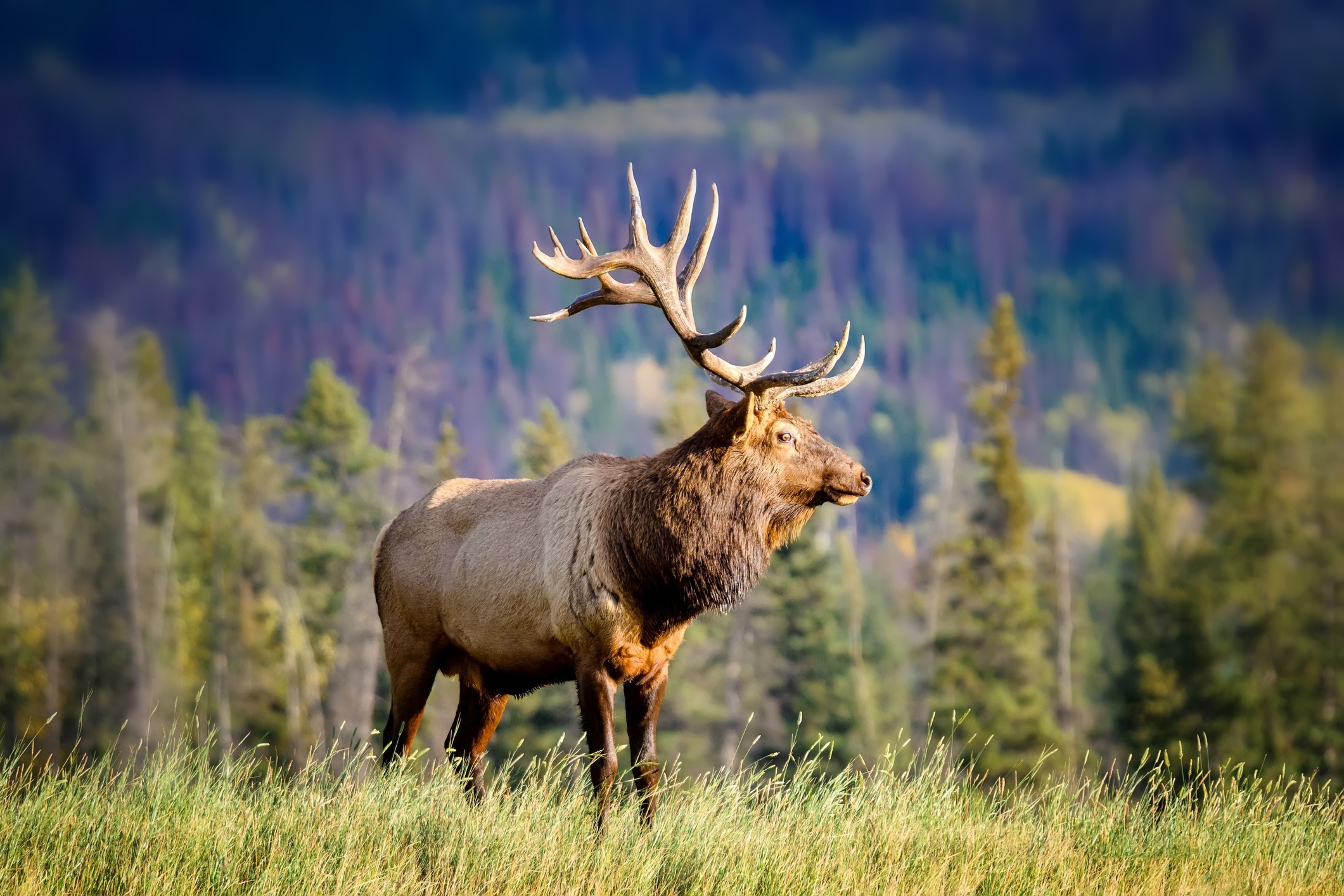
Canada is well known for its vast amount of wild natural spaces. These diverse terrains are home to over 140,000 known species. Boreal and temperate rainforests, mountains, grasslands, tundra and coastal waters are home to a thriving population of iconic animals, birds and marine wildlife.
Unfortunately these habitats face threats that seriously endanger much of Canadian wildlife. Preserving Canada’s exceptional biodiversity is crucial and the government is taking steps to make sure these wild areas are guarded and maintained responsibly.
How is Canadian wildlife protected today?
The Canadian government has a long way to go in enforcing sustainable policies and regulations to address deforestation, sport fishing, pollution, climate change and new developments. However, there are some initiatives in place that support habitat preservation.
National marine conservation areas protect ecosystems for present and future generations. Recreational fishery conservation partnerships provide conservation project funding, and proposal guidance. The Ecological Gifts Programs helps Canadians donate ecologically sensitive land to charities and governments.
The Petroleum and Environmental Management Tool is a mapping tool that provides information about northern habitats and their sensitivity to oil and gas endeavours.
Canada’s 37 national parks and 10 national park reserves are a major draw for those visiting and exploring Canada.
These treasured areas protect approximately 336,343 square kilometres of Canada’s lands. Parks Canada holds the responsibility of protecting and managing these areas so that visitors can enjoy them without compromising their ecological integrity.
So, where can you go to see Canada’s iconic wildlife?
Catch a glimpse of some of Canada’s iconic birds

- Canada goose - due to its telling name, the Canada goose is probably the most iconically Canadian of all the bird species. This large wild goose has a black head and neck, white on its cheeks and chin, and a brown body. Canadian geese live in arctic and temperate terrains, in both the wild and developed areas. Some places you're guaranteed to spot the geese are Vancouver’s Stanley Park, Point Pelee National park in Ontario, and Banff National Park in Alberta.
- Common Loon - the common loon is a diving bird whose head has a blue-green-purple sheen. Its body is covered in black and white plumage. The loon is famous for its beautiful, haunting call. Loons can be spotted in Northern and boreal forests, particularly near freshwater lakes and rivers. Lakes in the Rocky Mountains, KejimKujik National Park in Nova Scotia, and Algonquin Provincial Park are all beautiful locations to spot a loon and hear its famous call. Fun fact! Canada’s $1 coin is nicknamed “the loonie” as it contains a picture of a common loon on one side.
- Great Blue Heron - these large wading birds have exceptionally long legs and are blue, grey, black and white in colour. They live in wetlands, marshes, lakeshores and coastal regions. Some places to see them wading and fishing are Reifel Bird Sanctuary in British Columbia, Rondeau Provincial Park in Ontario, and Prince Edward National Park on Prince Edward Island.
- Bald Eagle - Canada hosts a huge population of these large predatory birds. British Columbia is by far the best province to spot bald eagles. Visit anywhere along the west coast including Vancouver Island, Haida Gwaii, the Fraser Valley, and you are guaranteed to spot the eagles soaring and fishing for their next meal.
Where to spot iconic marine wildlife

- Orcas: Also known as the “killer whale”, orcas are actually in the dolphin family. Orcas are recognized by their distinct black and white bodies. They are considered a cosmopolitan species, meaning that they have adapted to almost every oceanic environment. Pods of orcas are often seen on the coast of British columbia. Places like the Salish Sea between Vancouver Island and the mainland, the archipelago of Haida Gwaii, and the Inside Passage are prime areas for orca viewing. It's common to see orcas and other porpoises when commuting between islands and from the mainland via BC Ferries.
- Humpback whales: These baleen whales range from 14m-17m in size and their distinct song lasts anywhere from 4 to 33 minutes. They migrate up to 16,000 km per year. Canada is along their migratory path and they can be seen mainly in British Columbia and also Newfoundland and Nova Scotia. B.C.’s Johnson Straight, Salish Sea and Vancouver Island are places where you might spot a humpback.
- Beluga whales: This all-white whale lives in the Arctic and has a large echolocation organ on its head called a melon. Belugas can be spotted in northern regions of Canada such as the St. Lawrence River, Ont, Nunavut, Baffin Island and the Arctic.
- Walrus: These marine mammals are known for their large tusks and prominent whiskers. They can weigh up to 2000 Kg. They are considered a keystone species in Arctic marine regions. Walruses can be spotted hanging out on ice and land in the Arctic regions of Canada such as Nunavit, Hudson’s Bay, Newfoundland and the Beaufort Sea.
5 Iconic Animals of Canada and where to spot them

- Polar Bear: These large white bears are native to the Arctic and surrounding regions. Fun fact! They have black skin underneath their white fur. Polar Bears are considered vulnerable species due to climate change severely affecting their habitats. Polar Bear Provincial Park in Ontario is an obvious place to see them. They can also be spotted in Manitoba’s Wapusk National Park, Nunavut, Northern Newfoundland and other Northern coastlines.
- Moose: Moose are a large, hooved animal with massive antlers. They are the second largest land animal in North America. Moose live in boreal and temperate forests, prefer cooler climates, and love marshy habitats. You can spot a moose in almost every province and territory. Moose hot spots are Jasper National Park in Alberta, Cape Scott Provincial Park, B.C., or Northern Ontario and Quebec.
- Cougar: Also known as the puma or mountain lion, these cats are the second largest cat in the Americas. They are found in the western regions of North, Central and South America, all the way down to the Andes Mountains and the Amazon rainforest. They are elusive and hard to spot. If you’re lucky you can see one in forested or mountainous terrains such as on Vancouver Island or in the Rocky Mountains.
- Beaver: Beavers are semi-aquatic rodents and are the second largest rodent in the world. Beaver became a national emblem of Canada in 1975. Beavers construct dams to live in and can be found living on rivers, streams, lakes and ponds. They live in every province and territory and the best way to see them is to take a walk along a river, pond or lake.
- Grizzly Bear: The grizzly bear is a large species of brown bear that inhabits North America. Most Canadian grizzlies live inland in western Canada, and are considered more aggressive than black bears. Western Canada is heavily populated with grizzlies and they can be spotted in regions such as the Great Bear Rainforest, the Kootenay and Purcell Mountains, the Rocky Mountains and the Yukon.
Save a bear’s life by practising bear awareness
Human-bear interactions lead to “problem” bears, which are bears that adapt to human environments. Efforts to deter them often fail, resulting in their relocation or killing. B.C. spends on average over $1 million on the slaughtering of “problem” bears. Bear awareness programs teach people to properly manage food and garbage to prevent bear/human conflicts. The term “problem bear” is misleading—these conflicts are never the bear’s fault, we humans are on their territory and it’s our responsibility to be bear aware.
Wildlife conservation in Canada is a shared responsibility

Canada’s wildlife is a national treasure and it’s imperative to protect and preserve wildlife habitats. Canada offers incredible opportunities to observe iconic birds and animals. Both visitors and locals must practise responsible tourism and bear awareness to ensure wildlife safety and wellbeing, so that future generations can continue to witness Canada’s diverse creatures.
What do our customers say?




























